17-2. "Zum Wilden Mann"
Built 1639 (?)
Residential and commercial building with craftsmen's yard,
House owners were:
Clothier, innkeeper, oil miller, grocer,
tobacco spinner, printer, bookseller.
Jacob Caprano advertised his inn with the sign " Zum Wilden Mann" from 1749-1780. After the town fire of 1631, the reconstruction of an older building probably began in 1639. From 1808 to 1911, the house was owned by the Castor family, after whom it is also called the Castor House.
In 1759, the town magistrate granted Jacob Caprano permission to put up the sign "Zum Wilden Mann" on his house in return for a payment of three riksdalers. He had already been advertising his wine bar with a wine sign since 1749. Next to his inn, he ran a grocery shop with spice specialities, where he offered ground coffee for the first time in the Maifeld in 1744.
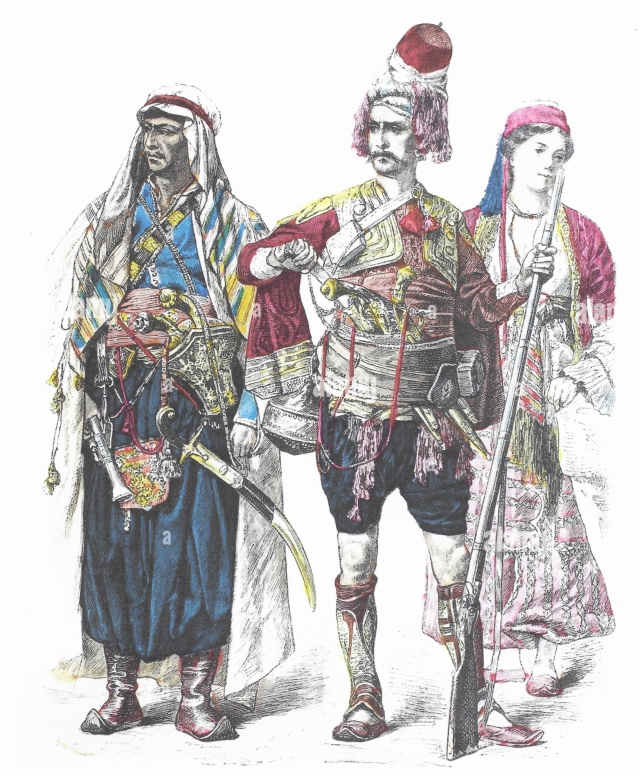
In addition to coffee, the people of Münstermaifel also met guests from the Ottoman Empire in the 18th century. They travelled through Europe as "Princes from Lebanon", they were Maronites who, as Christians besieged by the Ottomans, sought support in the "Holy Roman Empire". They presented letters of recommendation from high-ranking ecclesiastical and secular dignitaries, who not only opened the doors for them but also the purses of the courts and magistrates they visited. This was also the case in Münstermaifeld. The chronicler Büchel knows of the following visits. On 27 July 1730 a "Prince Abcisse" from Palestine was in the town, on 30 May 1767 an "Arab Count" and his servant visited Münstermaifeld, on 27 June 1770 the "Prince "Abeyse" from Palestine was in the town, he received board and lodging and a ducat travel allowance, on 11 September 1770 another visit by an "Arab Prince", the last visit was in June 1796 by a "Turkish Prince". It is disputed how many of the alms-seeking visitors were impostors. In any case, Münstermaifeld seems to have had a hospitable reputation among travellers.
The Maifeld owes another innovation to him: in 1761 he was the first to plant fodder clover. Like his fellow citizen Franz Peter Canaris, the Caprano family came from Sala Comacina on Lake Como. The Canaris and the Caprano were among the numerous "French" immigrants who settled in the Electorate of Trier after the Thirty Years' War. With his ventures, Jacob Caprano earned the recognition of the burghers, who made him mayor of the city in 1767/68. Jacob Caprano had acquired the house from the Deisen family of clothiers. The clothiers, united in the oldest and largest guild, were the most important economic factor in the town in the 18th century; in 1792 there were 32 clothiers.

Their importance can also be seen in the "Standplan" for the market vendors. The stalls are drawn in deep blue, like the colour of the apron worn by the clothiers, and are the first to be placed under A in a preferred location. The importance of the stand location is shown by the dispute between Jacob Caprano and a supplier from Polch, which was brought before the market court in 1851. Caprano had set up his spice stall in front of the town hall, a preferential location that was not available to the spice traders. The house "Zum Wilden Mann", a baroque half-timbered Moselle-Franconian building on a quarry stone base, stood in a privileged position on the market. Until the 20th century, the north-south axis of the town, which crossed the market, was lined with houses that combined living, manufacturing and selling. Perhaps Jacob Caprano was too daring entrepreneurially, for he had to sell the house in 1780 due to debts. He died, dependent on alms, in 1795.
The building history of the house over more than 300 years is complicated, as the sequence of pictures (drawn by Klaus Groß) shows.
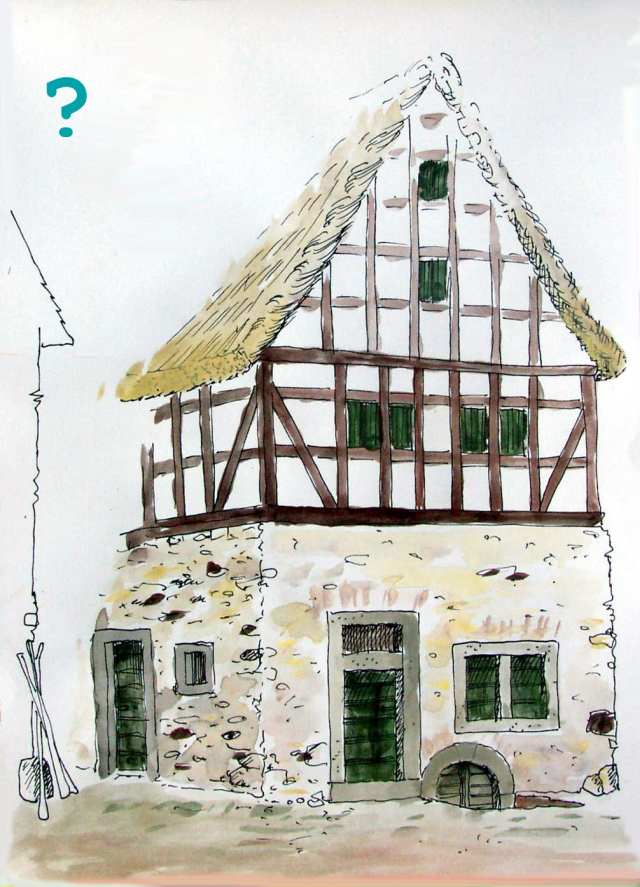
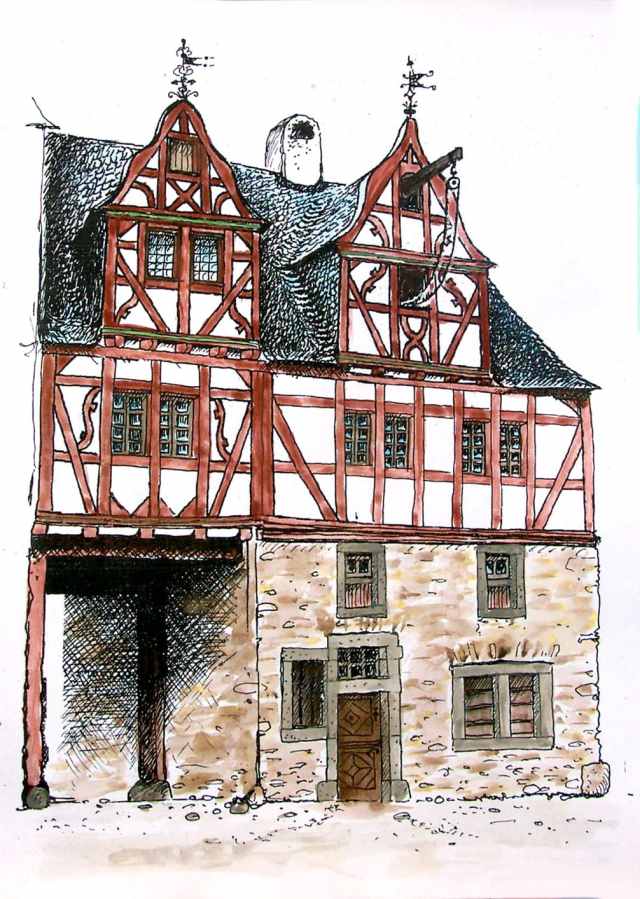
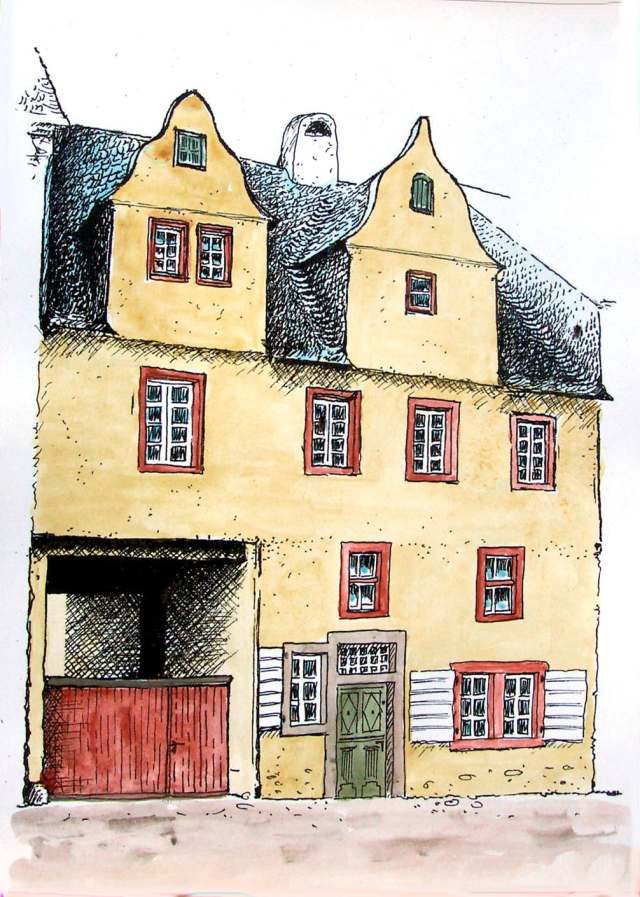

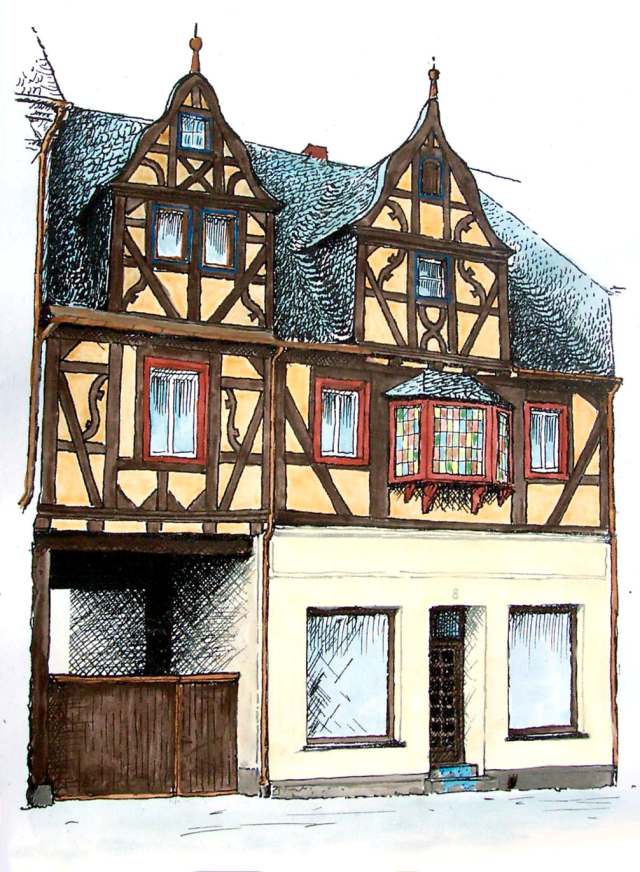

Sie finden Hilfe beim Vergleichen und Verstehen der Veränderungen unter folgendem Link: Ein historisches Haus erzählt seine Geschichte. Eine Dokumentation von Klaus Groß. Sie liegt als PDF-Version in einer Größe von etwa 2,5 MB vor (bitte überlegen Sie, ob Sie die Version mit Ihren mobilen Daten herunter laden möchten).
Glossary
Zum wilden Mann
The Caprano's inn may have taken its name from an element of the half-timbering, the "Wild Man". This is a strut, like a St. Andrew's cross, which creates the image of a man with his arms and legs spread apart.
Standplan
A picture of the dimensions of larger market days in earlier centuries is given by a list from 1806. According to the market regulations, the following vendors had fixed places for their stalls: the clothiers, yard goods, linen, bedding, cloth and lace makers, the red and white tanners, the button makers, stocking weavers and hat makers, coarse smiths, silver makers, spice makers, tanners, table makers, cap makers, shoe makers, rope makers, copper makers, buckle makers, iron makers, nail smiths, glove makers, seed makers, stone and earthenware makers, flax makers, bakers and finally Jews and Allerleikrämer. There was also a special stall where wine could be drunk.



